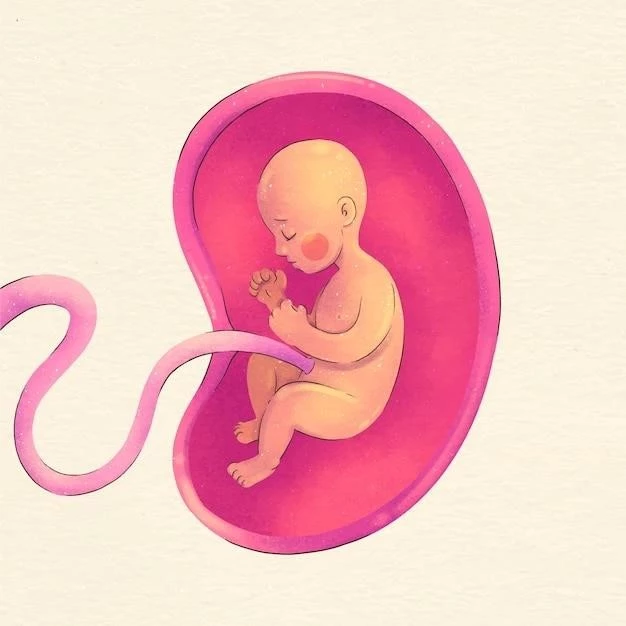Managing Kernicterus in Newborns
Understanding how Kernicterus and bilirubin induced neurological damage can affect infants is crucial for early detection and intervention․ Learn about risk factors, prevention strategies, treatment options like phototherapy and blood transfusion, and the importance of long-term management and follow-up care․
Understanding Kernicterus and Bilirubin Induced Neurological Damage
When bilirubin levels in newborns become too high, it can lead to jaundice, causing yellowing of the skin and eyes․ In severe cases, high levels of bilirubin can result in Kernicterus, a condition that can lead to brain damage and neurological impairment․ It is crucial for parents and caregivers to recognize the signs of jaundice and seek medical intervention promptly․ Some infants may exhibit neurological symptoms such as poor feeding, lethargy, or high-pitched crying, which should not be ignored․
Preventing Kernicterus involves monitoring bilirubin levels in newborns, especially those born premature or with certain risk factors like Rh incompatibility or ABO blood type incompatibility․ Regular check-ups with a pediatrician are essential to assess the baby’s health and development․
Risk Factors and Prevention Strategies
Several factors can increase the risk of Kernicterus in newborns․ These include prematurity, Rh or ABO blood type incompatibility between the mother and baby, a previous sibling with jaundice, East Asian or Mediterranean descent, or certain genetic conditions․
To prevent Kernicterus, it is crucial to monitor bilirubin levels in newborns, especially if they fall into the high-risk category․ Ensuring regular check-ups with a pediatrician, breastfeeding frequently in the first days of life, and receiving proper treatment if jaundice is detected are important strategies to reduce the risk of Kernicterus․ In some cases, phototherapy or a blood transfusion may be necessary to lower bilirubin levels and prevent neurological damage․
Treatment Options for Kernicterus
Early detection and treatment of high bilirubin levels are essential to prevent Kernicterus and neurological damage in newborns․ If jaundice is diagnosed, various treatment options may be considered depending on the severity of the condition․ Phototherapy, which involves exposing the baby to special lights that help break down bilirubin in the skin, is a common and effective treatment method․
In more severe cases, a blood transfusion may be required to rapidly decrease bilirubin levels and prevent further complications․ It is crucial for healthcare providers to closely monitor the newborn’s response to treatment and adjust interventions accordingly to ensure the best possible outcomes․
Phototherapy as a Primary Intervention
Phototherapy is a primary treatment method for managing high bilirubin levels in newborns and preventing the development of Kernicterus․ This non-invasive procedure involves exposing the baby’s skin to special blue lights that help convert bilirubin into a form that can be excreted from the body․
Parents and caregivers play a crucial role in supporting the baby during phototherapy sessions, ensuring that the eyes are protected, and providing comfort throughout the process․ It is essential to follow the healthcare provider’s recommendations regarding the duration and frequency of phototherapy sessions to achieve optimal results․
Role of Blood Transfusion in Severe Cases
In severe cases of Kernicterus where bilirubin levels are dangerously high and pose a significant risk of neurological damage, a blood transfusion may be necessary as a critical intervention․ During a blood transfusion, the baby receives healthy donor blood to help lower the bilirubin levels rapidly․
It is essential for healthcare providers to closely monitor the baby’s response to the transfusion and observe for any potential complications․ While blood transfusions are typically reserved for severe cases, they can be life-saving in preventing further neurological impairment and long-term complications associated with Kernicterus․

Long-Term Management and Follow-Up Care
After experiencing Kernicterus, infants may require long-term management and follow-up care to address any potential developmental delays or neurological impairments․ It is crucial for parents to work closely with healthcare providers to create a comprehensive care plan that meets the child’s unique needs․
Regular developmental assessments, physical therapies, and educational interventions may be recommended to support the baby’s ongoing growth and development․ Early intervention services can help optimize the child’s outcomes and ensure they receive the necessary support to thrive despite any challenges associated with Kernicterus․
Promoting Awareness and Advocacy for Kernicterus Prevention
One of the key aspects of preventing Kernicterus is raising awareness about the importance of early detection and treatment of jaundice in newborns․ Parents, caregivers, healthcare professionals, and policymakers play a crucial role in advocating for comprehensive newborn screening programs and supporting access to necessary interventions․
By educating communities about the risks of untreated jaundice and the potential consequences of Kernicterus, we can empower individuals to seek timely medical attention and prevent long-term neurological damage in infants․ Advocacy efforts aimed at promoting policies that prioritize newborn health and facilitate early intervention can have a significant impact on reducing the incidence of Kernicterus and improving outcomes for at-risk newborns․
